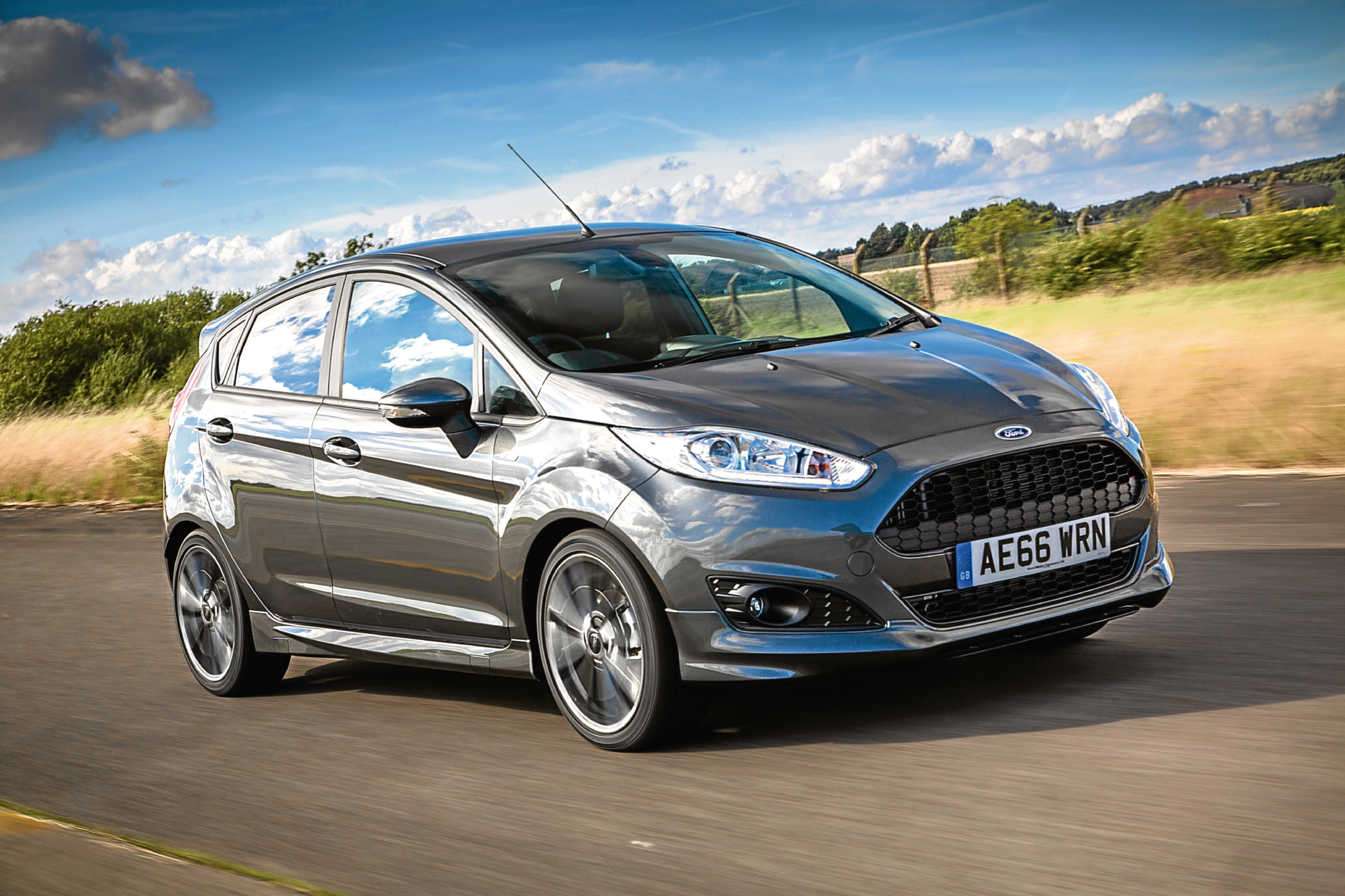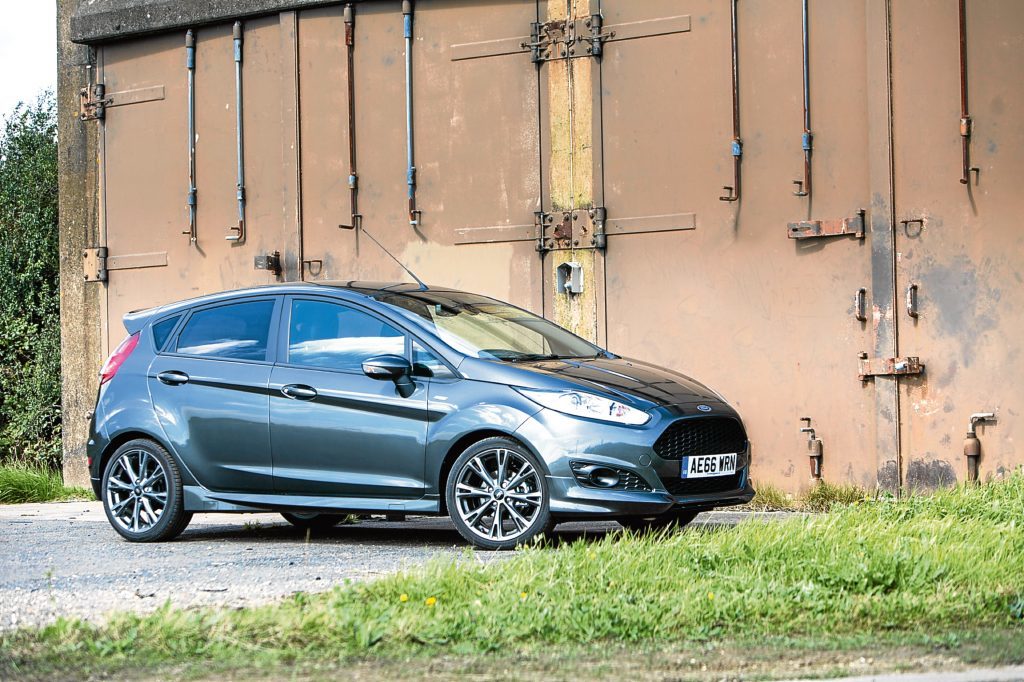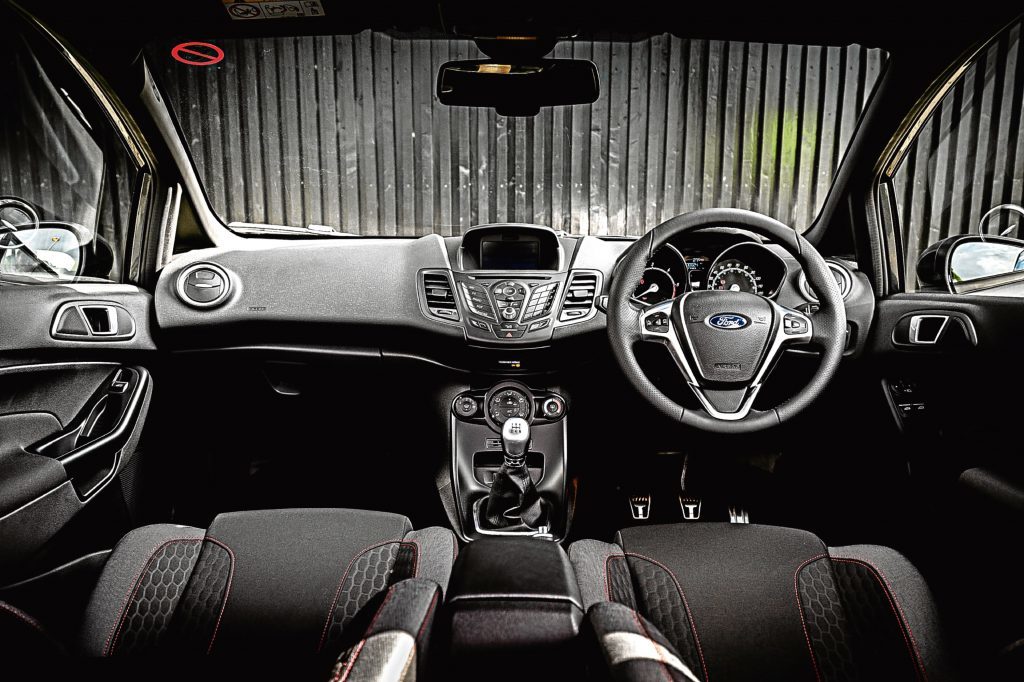Regular readers will recall last week I reviewed the Ford Focus ST Line.
Here we have its baby brother, the Fiesta ST Line.
For a quick recap, the ST Line range looks quite like the more expensive and much faster ST hot hatches, but have economical little engines under their bonnets.
In the case of the version I drove, that’s Ford’s 1.0 litre three-cylinder EcoBoost petrol engine.
It’s available in a variety of strengths and I had the most powerful 140bhp iteration. The Fiesta ST Line range starts at a little over £16,000 and my car cost £17,585.
It’s by no means hot hatch quick but it’s pretty nifty, with 0-62mph coming up in nine seconds dead. It’s a revvy little unit and, because its lightweight, it makes an already dynamic car feel even more agile.
While real petrolheads will spot the absence of beefy exhausts at the back, to the casual observer they could be looking at a 200bhp Fiesta ST.
A high level rear spoiler forms part of a snazzy body kit, and there’s nice looking set of alloys too.
Think of it as a Fiesta ST light and you won’t be far wrong.
The rest of the line up consists of the same 1.0 litre engine in weaker strengths (100 and 125bhp) and a 1.5 litre diesel model.
Although it’s been improved and revised over the years this model of the Fiesta has been around since 2008 and is due for replacement this summer.
It’s a testimony to just how amazing it was nearly a decade ago that it still feels fresh to drive.
Much more recently introduced cars such as the Vauxhall Corsa and Peugeot 208 now edge it when it comes to comfort and refinement, but not by much.
And for pure fun there’s still nothing that can beat the little Fiesta. Sitting on a wonderfully dynamic chassis, it loves nothing better than to be thrown through a series of bends.
Clutch, brake and accelerator are all nicely weighted and the five-speed gearbox is easy to work through.
While it doesn’t have the outright performance of the ST, nor the grip given its smaller tyres, it’s almost as entertaining to drive.
The ST’s suspension is firm bordering on harsh, which becomes tiresome on longer journeys.
By contrast, the ST Line’s softer set up makes it a much better all rounder – especially for mile munchers.
jmckeown@thecourier.co.uk


